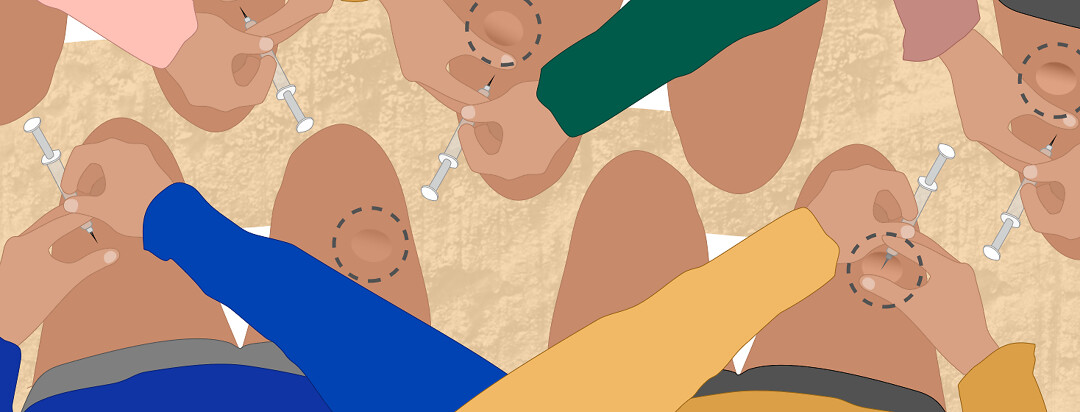Lipoatrophy in MS Patients
Lipoatrophy is the loss of fat under the skin. An affected area may look like a valley or trough in your skin. Areas are patchy and uneven. Several affected areas may run into each other.1
You may feel that dips in your skin detract from the way you look. Lipoatrophy may lower your self-image and your self-esteem. These feelings may change your social and emotional behavior.1
Lipoatrophy also may affect your medical treatment. Lipoatrophy and skin problems were the most common reason for people with multiple sclerosis (MS) to stop treatment with glatiramer acetate (available under the brand names Glatopa® and Copaxone®).2
Who is most likely to experience it?
Lipoatrophy can occur after injection in the skin or in the tissue under the skin. It occurs in up to 45 percent of people treated with glatiramer acetate.3
Daily injections of glatiramer acetate reduce relapses of MS symptoms by 32 percent. The most common side effect is a local “allergic” reaction. The skin gets red and harder than normal at the injection site. The reaction lasts up to several days.4
A few people with relapsing-remitting MS (RRMS) also get lipoatrophy after treatment with interferon-beta-1b (available as Extavia® and Betaseron®).3
Other injections related to lipoatrophy include:1
- Corticosteroids
- Insulin
- Vasopressin
- Human growth hormone
- Iron dextran
- Diphtheria-pertussis-tetanus vaccine
- Antihistamines
Canadian researchers studied people whose RRMS was treated with glatiramer acetate. All the people in the study were white. Of those with lipoatrophy, all were women between the ages of 30 and 64. The women had used glatiramer acetate from 7 to 54 months.1
Nearly 60 percent of those with lipoatrophy and only 10 percent of those without it had fair skin or red hair. About 44 percent of those with lipoatrophy and 26 percent of those without it were of slight stature.1
Where on the body does it occur? How is it treated?
Usually, lipoatrophy occurs at the site of injections. Several studies found that lipoatrophy was more common on thighs and arms than in other locations. Injection sites on the abdomen seemed to be least affected.1
It is always a good idea to inspect your injection site on a regular basis to see if there is any sign of lipatrophy. This way you can catch it early and use a different injection site going forward. Some people try to avoid lipoatrophy by only injecting into the abdomen. Others ice their injection sites before and after treatments for MS.1
A study reported in 2014 that endermology reduced lipoatrophy in people with RRMS. This technique uses a motorized device to perform a deep massage. People in the study had endermology sessions twice a week for 6 weeks.5
Endermology side effects were:5
- Pain: 11 percent
- Discomfort: 4 percent
- Local blotch/swelling and transient bruise: 1 percent
What does the future hold?
Research into the causes of lipoatrophy may provide targets for treatment. More research is also needed into lipoatrophy’s psychological effects.1
Before beginning treatment for RRMS or lipoatrophy, tell your doctor about all your health conditions and any other drugs, vitamins, or supplements you are taking. This includes over-the-counter drugs.
Talk to your doctor about what to expect or if you experience any changes that concern you during treatment.

Join the conversation